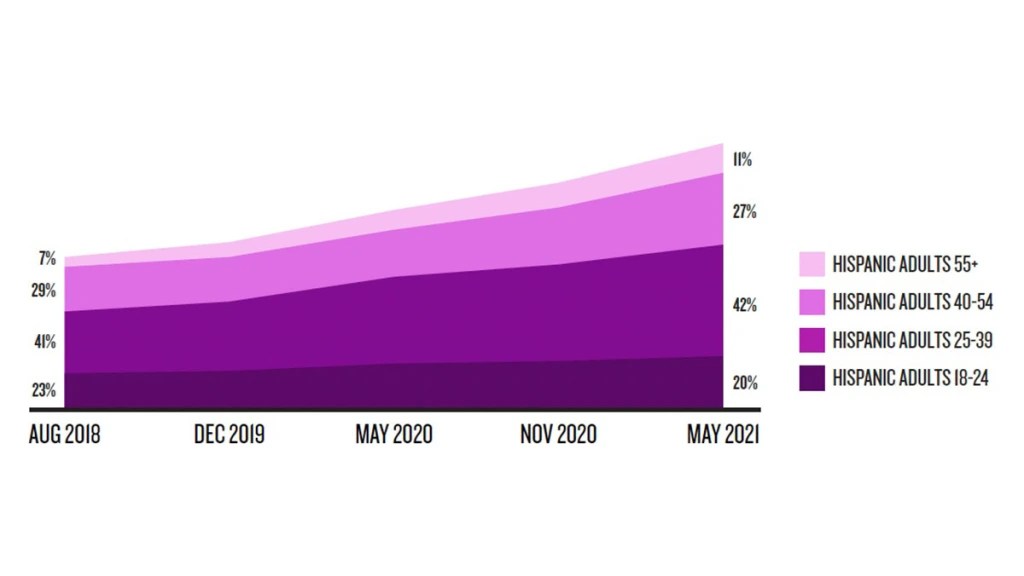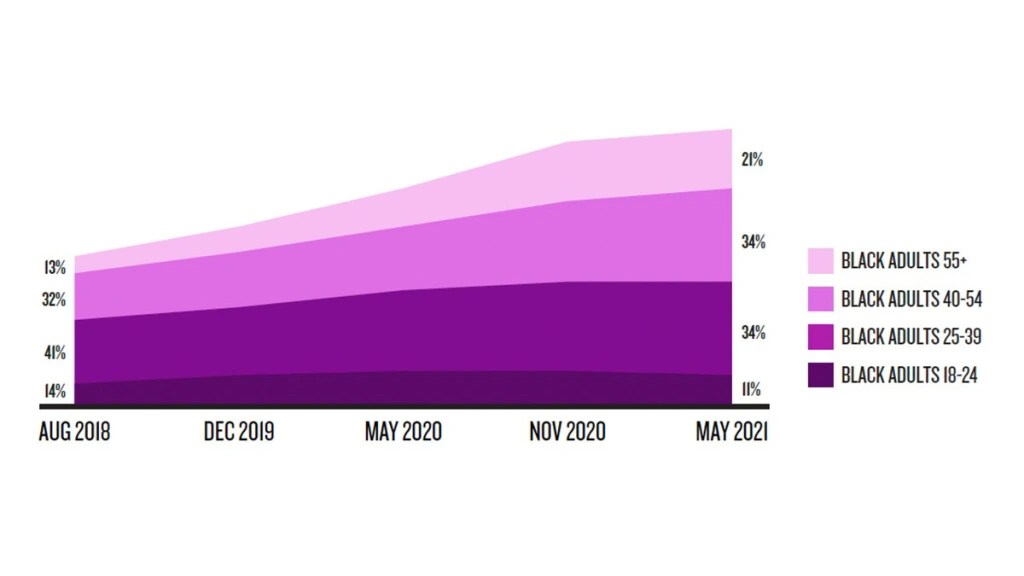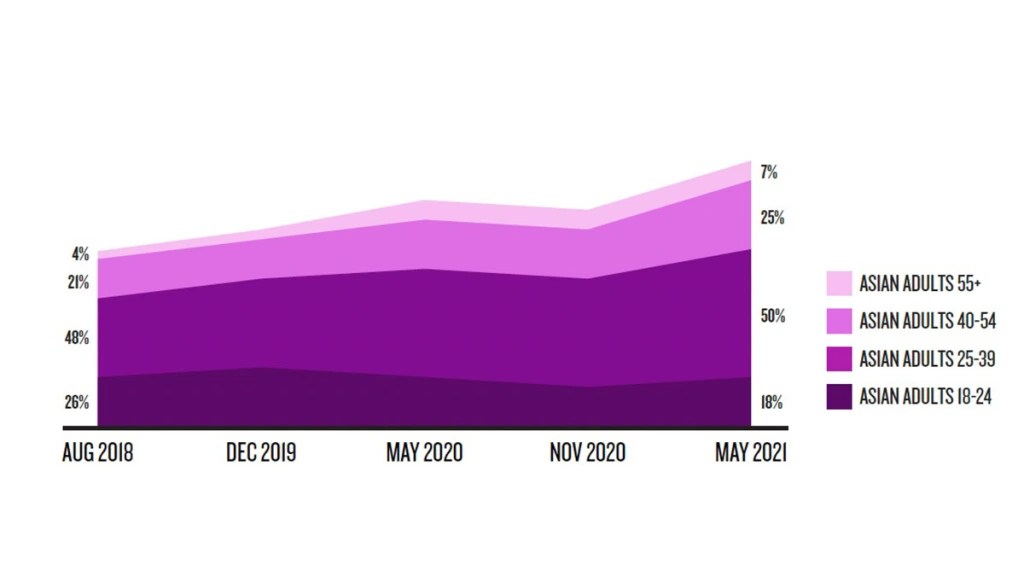The appeal of new content offerings throughout the pandemic has been widely documented, with the acceleration of connected TV adoption taking center stage. The appeal of video content notwithstanding, consumers’ content appetites have not been limited to media they can see. Importantly, podcasts continue to gain mainstream audiences, with light podcast listeners across age groups and multicultural listeners leading the growth.
Today, light podcast listeners account for almost half (49%) of the total podcast audience, and data from Nielsen Podcast Buying Power, which provides insight into who is listening to podcasts, shows how podcast reach is growing across age groups, including adults 40-55, who now account for almost half (47%) of listeners in aggregate. The increasing appeal of podcasts to general audiences is exactly why brands and agencies need to be tracking engagement with them and leveraging the opportunities in their marketing strategies and campaigns.
“The growth of podcasting has brought a massive opportunity for advertisers to reach highly engaged audiences,” says Arica McKinnon, Vice President, Client Consulting at Nielsen. “While the industry has made strides to capture metrics like downloads, brands have been challenged to understand the impact of ads. Today, those challenges are fading.”
Importantly, the pandemic has not had a negative impact on overall podcast engagement. When shelter-in-place restrictions went into effect last year, growth flattened, but it resumed late in the year and then ramped up notably this year. The broadening of the podcast audience combined with the rise in at-home listening speaks to a notable shift from who the typical podcast listener was five years ago, where they listened—and how often. Today, 50% of podcast listening happens at home, which is up 10 percentage points from just three years ago.
While the growth in podcast listeners in the U.S. over the past decade has been dramatic, audience diversity is following a similar path as our national population, as non-White podcast audiences have grown faster than White audiences. In fact, as of last year, the U.S. podcast audience was more diverse than the U.S. itself: 41% was non-White, while only 34% of the U.S. population is non-White. We continue tracking the diversity of podcast engagement, noting significant growth across Hispanic, Black and Asian consumers.
Podcast advertising—particularly when read by the host—drives stronger brand recall punch than more traditional forms of advertisements. For example, Nielsen’s Podcast Ad Effectiveness (PAE) solutions have found that host-read ads drive a brand recall rate of 71%, which subsequently creates high levels of consumer interest, purchase intent and recommendation intent.
What’s more, longer ads (60 seconds+) drive even higher lifts among consumers. When it comes to seeking more information about a brand, longer ads are nearly 70% more effective in this category than shorter ones. The lift scores for purchase intent and recommendation intent are both 40% higher for longer ads than shorter ones. Lastly, not only do longer ads generate stronger engagement, they also drive brand recall: nearly three quarters of listeners were able to recall the brand after hearing a longer ad.
The buzz around podcasting has been building for years, but an array of mergers and acquisitions last year—amid the uproar of the global pandemic—began to carve out strategic relationships that will formulate the podcast industry of tomorrow.
That consolidation is evidence that podcasts are truly an industry now and addresses many of the challenges that advertisers faced in earlier days: navigating a fragmented array of delivery mechanisms and platforms that prompted many questions about scalability. Thankfully, those questions are more easily answered, given the wealth of information available about who’s listening and how engaged they are with what they’re listening to.
For additional insight, download our latest Podcasting Today report.






